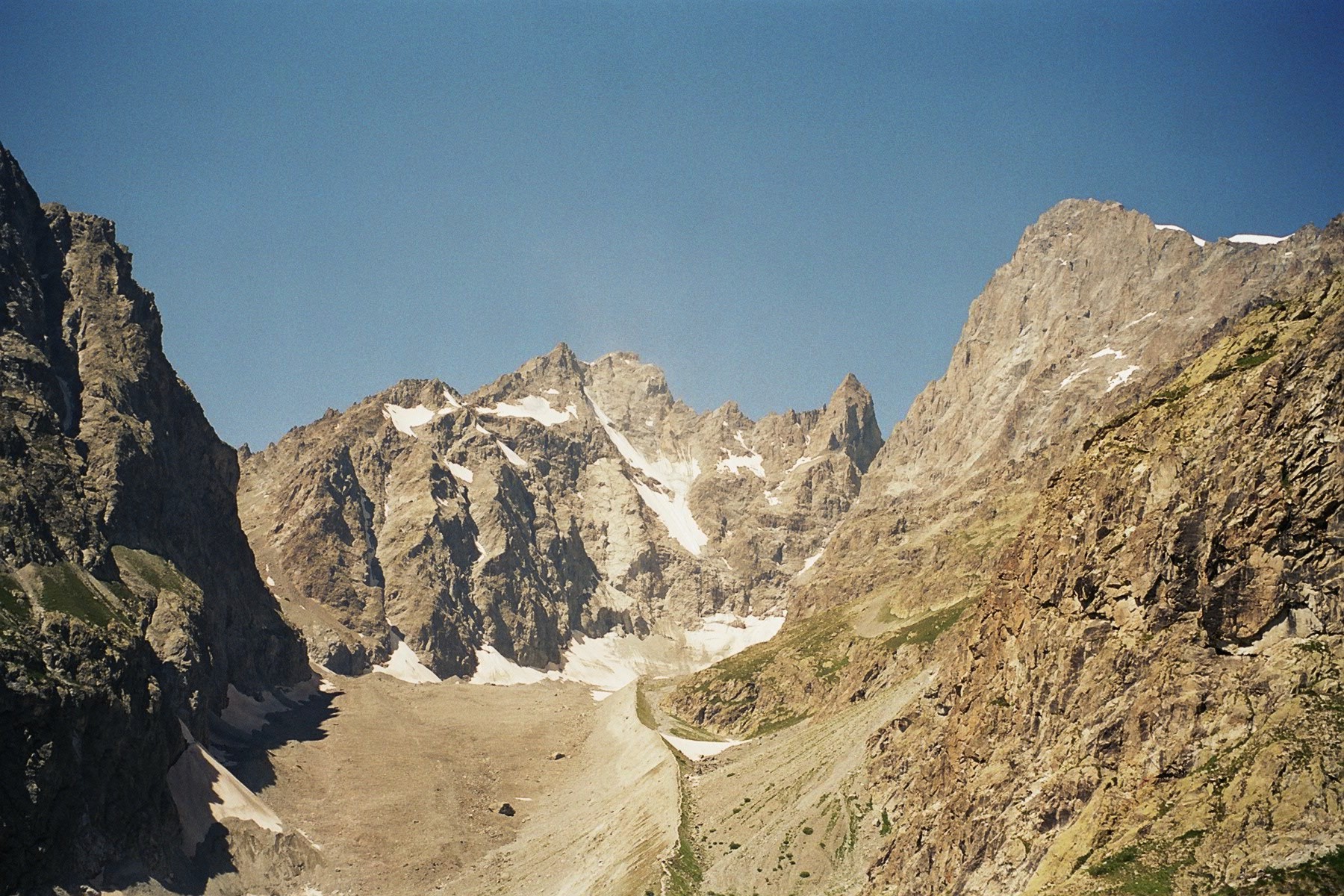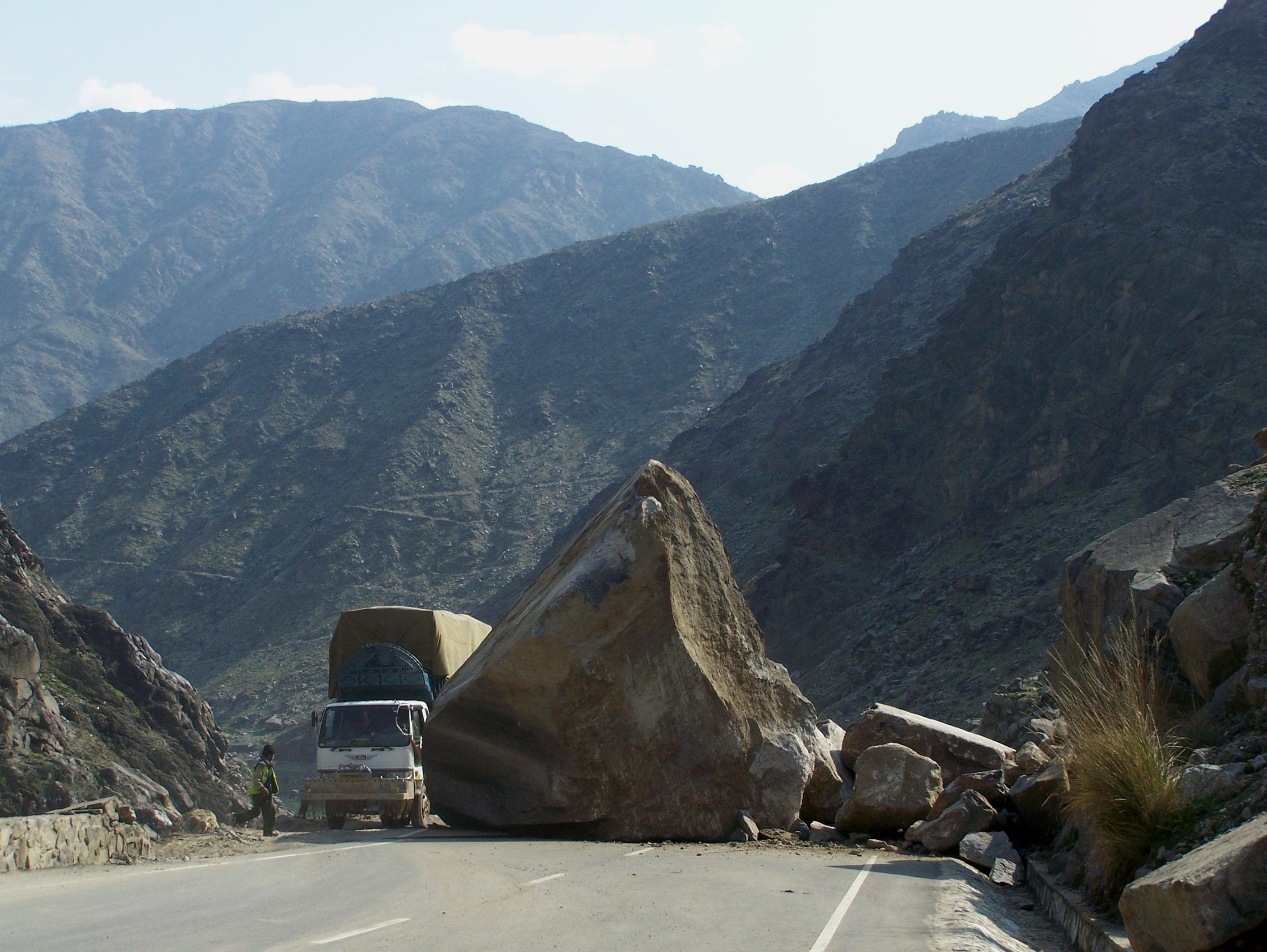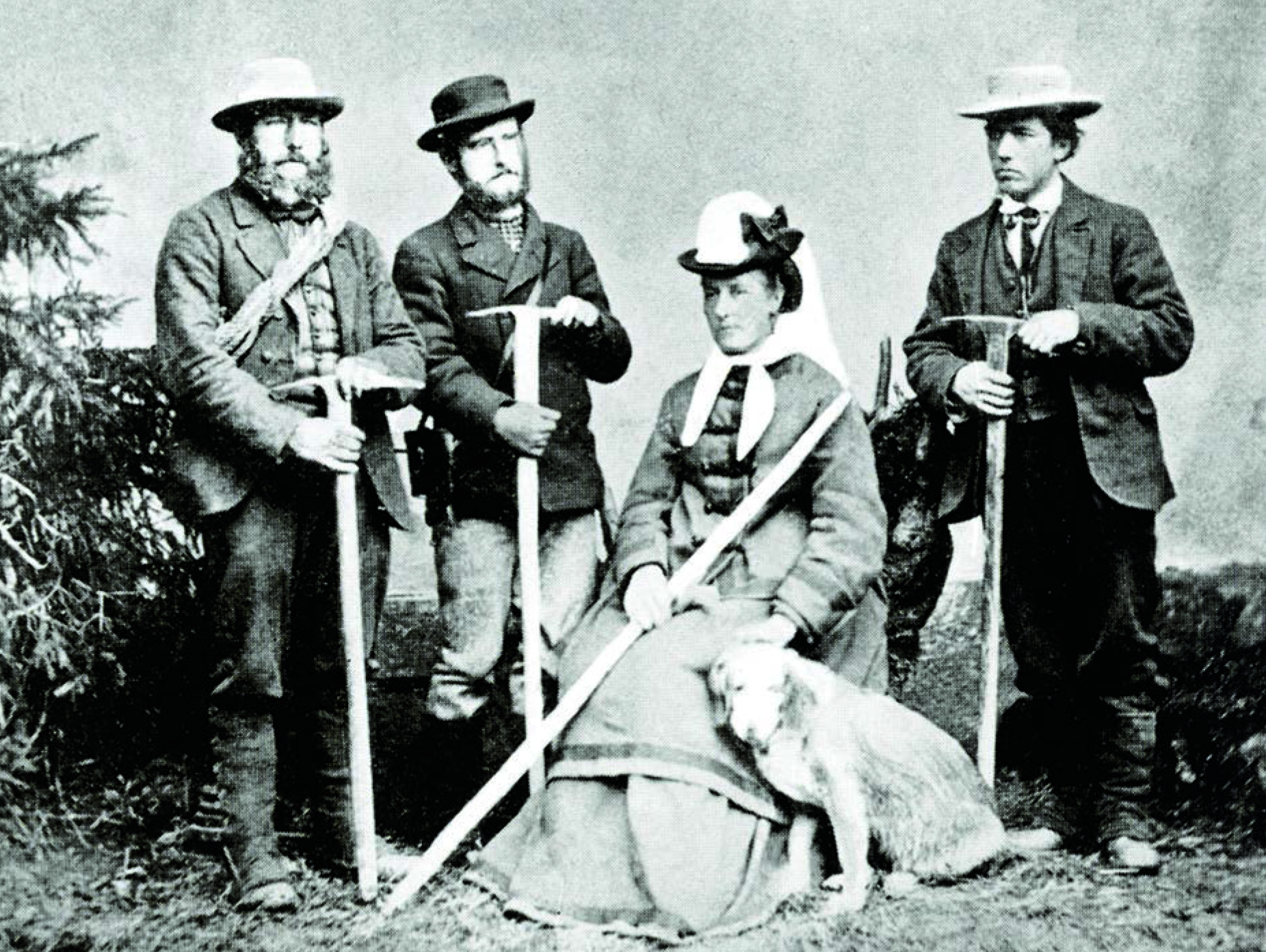|
La Meije
La Meije is a mountain in the Massif des Écrins range, located at the border of the Hautes-Alpes and Isère '' départements''. It overlooks the nearby village of La Grave, a mountaineering centre and ski resort, well known for its off-piste and extreme skiing possibilities, and also dominates the view west of the Col du Lautaret. It is the second highest mountain of the Écrins after the Barre des Écrins. Summits * Main ridge from west to east ** ''Le Grand Doigt'', 3.764 m ** ''Pic du Glacier Carré'', 3.862 m ** ''Grand Pic de la Meije'' or ''Pic Occidentale'', 3.983 m ** ''Pic Central'' or ''Doigt de Dieu'', 3.970 m ** ''Pic Oriental'', 3.891 m Neighboring peaks are Le Râteau (3,809 m) to the west, past the ''Brèche de la Meije'' (3,357 m) and :fr:Le Pavé (3,823 m) and Pic Gaspard (3,881 m) to the southeast, past the Brèche Maximin Gaspard (3,723 m) Historic ascents The central and second highest summit has five teeth, the highest of which is known as ''Doig ... [...More Info...] [...Related Items...] OR: [Wikipedia] [Google] [Baidu] |
List Of Mountains Of The Alps Above 3000 M
This page tabulates only the most prominent mountains of the Alps, selected for having a topographic prominence of ''at least'' , all exceeding in height. Although the list contains 537 summits, some significant alpine mountains are necessarily excluded for failing to meet the stringent prominence criterion. The list of these most prominent mountains is continued down to 2500 m elevation at List of prominent mountains of the Alps (2500–2999 m) and down to 2000 m elevation on List of prominent mountains of the Alps (2000–2499 m). All such mountains are located in France, Italy, Switzerland, Liechtenstein, Austria, Germany or Slovenia, even in some lower regions. Together, these lists include all 44 List of Alpine peaks by prominence, ultra-prominent peaks of the Alps, with 19 ultras over 3000m on this page. For a definitive list of all 82 of the highest peaks of the Alps, as identified by the International Climbing and Mountaineering Federation (UIAA), and often referred to ... [...More Info...] [...Related Items...] OR: [Wikipedia] [Google] [Baidu] |
Barre Des Écrins
The Barre des Écrins () is a mountain in the French Alps with a peak elevation of . It is the highest peak of the Massif des Écrins and the Dauphiné Alps and the most southerly alpine peak in Europe that is higher than 4,000 metres. It is the only 4,000-metre mountain in France that lies outside the Mont Blanc Massif. Before the annexation of Savoy in 1860 it was the highest mountain in France. Geography Location The Barre des Écrins is the highest peak in the Provence-Alpes-Côte d'Azur region including all of Occitania and the Southern Alps. It is located in the commune of Pelvoux and is situated near the Drainage divide between the Durance and the ''Vénéon''. This divide passes 250 metres west of the summit, along the ridge that leads to the summit of the sub-peak ''Dôme des Écrins'' (4088 metres). The south face of the mountain is rocky while the north face is ice as it is the starting point of the Glacier Blanc. The mountain is surrounded by four glaciers: to the ... [...More Info...] [...Related Items...] OR: [Wikipedia] [Google] [Baidu] |
Refuge De L'Aigle
Refuge de l'Aigle is a refuge in the Alps The Alps () are some of the highest and most extensive mountain ranges in Europe, stretching approximately across eight Alpine countries (from west to east): Monaco, France, Switzerland, Italy, Liechtenstein, Germany, Austria and Slovenia. ... in France. It opened in 1910 and was renovated during the summer 2014, and therefore closed between September 2013 and August 2014. Mountain huts in the Alps Mountain huts in France {{HautesAlpes-geo-stub ... [...More Info...] [...Related Items...] OR: [Wikipedia] [Google] [Baidu] |
Refuge Du Promontoire
Refuge du Promontoire is a refuge in the Alps located in France in the massif des Ecrins, it is just build on rock in front of the South face of La Meije La Meije is a mountain in the Massif des Écrins range, located at the border of the Hautes-Alpes and Isère '' départements''. It overlooks the nearby village of La Grave, a mountaineering centre and ski resort, well known for its off-pis .... It's the starting point of the famous crossing of La Meije, which is known to be one of the most beautiful mountain run into the Alps. The access is made from La Bérarde by le vallon des Étançons, or from La Grave by les Enfetchores and la brêche de la Meije. The shelter was first constructed in the 1920s out of wood. In 1966, this was demolished and replaced by an aluminium construction. Mountain huts in the Alps Mountain huts in France {{france-struct-stub ... [...More Info...] [...Related Items...] OR: [Wikipedia] [Google] [Baidu] |
Angelo Dibona
Angelo Dibona (7 April 1879 – 21 April 1956, nickname: Pilato) was an Austro-Hungarian and Italian mountaineer. He is remembered as one of the great pioneers of climbing in the Dolomites and is responsible for many first ascents throughout the Alps. The Aiguille Dibona in France, the Campanile Dibona ( Monte Cristallo) and the Dibona-Kante on the Cima Grande di Lavaredo (both in Italy) are named after him. Biography Dibona was born in Cortina d'Ampezzo in 1879. From 1905 he was a mountain guide and a ski instructor in the Cortina area, and he became known for pioneering routes in the Dolomites, making more than 70 first ascents and becoming the leading climber during the heyday of climbing in the Dolomites. In 1910 he made the second ascent of the Christomannosturm in the Trentino-Alto Adige/Südtirol, 13 years after its first ascent. Dibona's route included a high rock face with fifth-degree passages. He made notable ascents of a number of peaks in other parts of the A ... [...More Info...] [...Related Items...] OR: [Wikipedia] [Google] [Baidu] |
Rockfall
A rockfall or rock-fallWhittow, John (1984). ''Dictionary of Physical Geography''. London: Penguin, 1984. . is a quantity of Rock (geology), rock that has fallen freely from a cliff face. The term is also used for collapse of rock from roof or walls of mine or quarry workings. A rockfall is "a fragment of rock (a block) detached by sliding, toppling, or falling, that falls along a vertical or sub-vertical cliff, proceeds down slope by bouncing and flying along ballistic trajectories or by rolling on talus or debris slopes". Alternatively, a rockfall is "the natural downward motion of a detached block or series of blocks with a small volume involving free falling, bouncing, rolling, and sliding". The mode of failure differs from that of a rockslide. Causal mechanisms Favourable geology and climate are the principal causal mechanisms of rockfall, factors that include intact condition of the rock mass, discontinuities within the rockmass, weathering susceptibility, ground and surfa ... [...More Info...] [...Related Items...] OR: [Wikipedia] [Google] [Baidu] |
Emil Zsigmondy
Emil Zsigmondy (11 August 1861 – 6 August 1885) was an Austrian physician and mountaineer. Life Zsigmondy's parents were Hungarians: Adolf Zsigmondy, born in Pozsony, and Irma von Szakmáry, born in Martonvásár. Zsigmondy was an excellent alpinist, known for the risky nature of many of his climbs. He began mountaineering as a teenager, climbing the Reißeck (mountain), Reisseck in Austria in a round trip of 26 hours with his brother, Otto Zsigmondy. By the late 1870s the two brothers were climbing Alpinism sans guide, without guides in the Zillertal Alps. In 1881, they climbed the Ortler from the Hochjoch. Emil Zsigmondy was the friend and companion of Ludwig Purtscheller, the great pioneer of guideless Alpine climbing. Emil and Otto climbed with Purtscheller in 1882 and 1884, including an ascent without guides of the Marinelli Couloir on Monte Rosa and the first guideless traverse of the Matterhorn.''Mountaineers'' (Douglas/Smithsonian), p. 115. Zsigmondy's outstanding achi ... [...More Info...] [...Related Items...] OR: [Wikipedia] [Google] [Baidu] |
Ludwig Purtscheller
Ludwig Purtscheller (6 October 1849 – 3 March 1900) was an Austrian mountaineering, mountaineer and teacher. Purtscheller pioneered climbing without a mountain guide, who in the 19th century did all the route finding and lead climbing. By the end of his life he had recorded climbing over 1,700 mountains. A celebrated climb was the traverse of the Meije together with the Emil Zsigmondy, Zsigmondy brothers in 1885, which to this date is considered a classic alpine route. He is best known as the first European to ascend Kilimanjaro in 1889, together with the German mountaineer Hans Meyer (geologist), Hans Meyer. After a descent of the Aiguille du Dru with G. Löwenbach and Jakob Oberhollenzer on 25 August 1899, an ice axe broke and the rope team fell into a bergschrund. Purtscheller was injured and he was transferred to a hospital in Geneva and later Bern. After several months of recovery, he contracted pneumonia and died on the approximate date of his planned return home. In a e ... [...More Info...] [...Related Items...] OR: [Wikipedia] [Google] [Baidu] |
Charles Pilkington (mountaineer)
Charles Pilkington (1850–1918) was a British colliery engineer and mountaineer. In the Alps he was a pioneer of mountaineering without guides and made the first ascent of a number of peaks and several significant first guideless ascents. In the UK he made the first ascent of Sgùrr Dearg's Inaccessible Pinnacle on the Isle of Skye. Biography Pilkington was born in St Helens on 18 August 1850, the son of Richard Pilkington (1795–1869) and his wife Anne (1812–1883), née Evans. In 1829 Richard Pilkington went into partnership with his brother, William (1800–1872), who had joined the St. Helens Crown Glass Company in 1826 as a silent partner before assuming control of that company in 1828, when Richard joined him they reformed the company as Pilkington Brothers which went on to develop into the FTSE listed Pilkington glass-manufacturing company. One of Charles Pilkington's younger brothers, Lawrence (1855–1941) was also a prominent mountaineer and one of his elder bro ... [...More Info...] [...Related Items...] OR: [Wikipedia] [Google] [Baidu] |
Frederick Gardiner (mountaineer)
Frederick Gardiner (1850–1919) was a British ship-owner, explorer and mountaineer. A pioneer of mountaineering without guides, he made the first ascent of the Mount Elbrus and carried out a large number of other climbs in the Alps and the Caucasus. Biography Gardiner was born on 22 August 1850 in the Liverpool suburbs, the son of George Neish Gardiner, a wealthy merchant and ship-owner. Frederick Gardiner made his living as a ship-owner, he married Alice Evans of Warrington in 1881 and together they had four children. He died on 28 March 1919, aged 68, leaving an estate of £56,128 (about £3.5 million in 2022). Alpinism Gardiner was introduced to mountaineering, in Snowdonia, by his father at the age of eleven, his first alpine ascent was made in 1869 when he ascended Monte Rosa. The following year, with Lucy Walker and her father, he climbed the Matterhorn, the first ascent by a woman and only five years after Whymper had first ascended the mountain. He made the fi ... [...More Info...] [...Related Items...] OR: [Wikipedia] [Google] [Baidu] |
Meta Brevoort
Marguerite "Meta" Claudia Brevoort (November 8, 1825 – December 19, 1876) was an American mountain climber and pioneer in alpine history, known for her many first ascents and as a trailblazer in winter mountaineering. In the Dauphiné Alps, Haut Dauphiné region, the highest peak of the Grande Ruine, the 3,765-meter-high Pointe Brevoort, was named after her. Early life Brevoort was born on November 8, 1825 into New York high society and spent her early years at Couvent Sacré Coeur, a Paris convent school. During the summers, she accompanied her family to Switzerland, where she grew familiar with the Alps. It wasn’t until age 39 that she took up climbing. After the death of her parents, Meta Brevoort returned to New York City, New York in 1848 and moved in with her sister. During this time, she volunteered at a hospital and helped care for her sister's children, particularly her nephew, W. A. B. Coolidge, William Augustus Brevoort Coolidge, with whom she would share a lif ... [...More Info...] [...Related Items...] OR: [Wikipedia] [Google] [Baidu] |
Christian Almer
220px, Christian Almer Christian Almer (29 March 1826 – 17 May 1898) was a Swiss mountain guide and the first ascensionist of many prominent mountains in the western Alps during the golden and silver ages of alpinism. Almer was born and died in Grindelwald, Canton of Bern. Life During his lifetime, Christian Almer, like his contemporary Melchior Anderegg from Meiringen, was considered one of the best of the first generation of mountain guides. He guided his clients in the Bernese Alps, the Valais Alps, the Mont Blanc massif and the Dauphiné Alps. With his many first ascents or first winter ascents, he made a name for himself as a first-class alpinist of his time, guiding alpinists including Edward Whymper, W. A. B. Coolidge, Adolphus Warburton Moore, Leslie Stephen, and Gottlieb Samuel Studer. Christian Almer was married to Margaritha Kaufmann from 1846. His son Ulrich Almer (8 May 1849 - 4 September 1940 in Grindelwald), with whom he went on many mountain ... [...More Info...] [...Related Items...] OR: [Wikipedia] [Google] [Baidu] |






